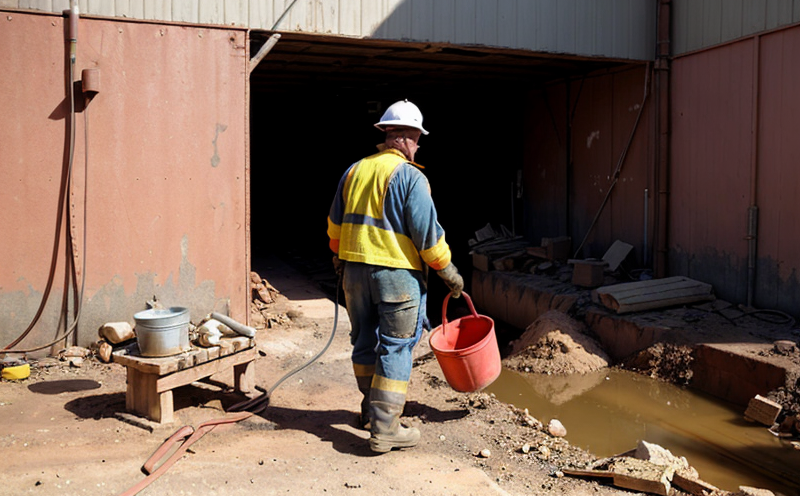NIOSH 7300 Trace Metals in Mine Air Testing
The NIOSH Method 7300 is a critical tool used to measure trace metals present in mine air, which plays an essential role in ensuring the safety and health of miners. This method addresses the need for accurate and reliable measurement of specific metal compounds that can be harmful when exposed to high concentrations over time.
The scope of this testing includes the determination of arsenic (As), beryllium (Be), cadmium (Cd), chromium (Cr), cobalt (Co), copper (Cu), lead (Pb), manganese (Mn), nickel (Ni), selenium (Se), vanadium (V), and zinc (Zn) in mine air. The methodology is designed to comply with the stringent requirements set forth by the National Institute for Occupational Safety and Health (NIOSH).
The testing process begins with collecting samples of mine air using a specialized sampling device that ensures accurate representation of the ambient conditions within the mine environment. Once collected, these samples are transported back to our laboratory where they undergo rigorous analysis.
Our state-of-the-art equipment allows for precise measurement down to parts per billion levels, ensuring that even minute amounts of these trace metals can be detected and quantified accurately. This level of accuracy is crucial given the potential health risks associated with prolonged exposure to certain levels of these elements.
The analytical methods employed in this testing follow the protocols outlined by NIOSH Method 7300, which ensures consistency across different laboratories conducting similar analyses. Compliance with such standards helps maintain reliability and comparability between results obtained from various sources.
It is important to note that while this service focuses primarily on detecting trace metals in mine air, it also contributes significantly towards maintaining occupational health and safety standards within mines worldwide. By providing reliable data about the presence of potentially harmful substances in the working environment, this testing helps employers make informed decisions regarding workplace modifications aimed at reducing risks.
In summary, NIOSH Method 7300 provides a vital service for those responsible for managing mine operations by offering dependable information on trace metal concentrations present in mine atmospheres. This knowledge empowers decision-makers to take proactive measures to protect workers' health and safety.
Scope and Methodology
The scope of NIOSH 7300 testing encompasses the measurement of multiple trace metals found in mine air, including arsenic (As), beryllium (Be), cadmium (Cd), chromium (Cr), cobalt (Co), copper (Cu), lead (Pb), manganese (Mn), nickel (Ni), selenium (Se), vanadium (V), and zinc (Zn). These metals are selected based on their known occupational hazards when present at elevated levels.
- Arsenic: Known carcinogen; linked to lung cancer, bladder cancer, and skin lesions
- Beryllium: Inhalation can cause chronic beryllium disease, a severe lung disorder
- Cadmium: Linked to kidney damage and bone demineralization
- Chromium: Carcinogenic; associated with respiratory diseases like bronchitis and emphysema
- Cobalt: Toxic to the heart, liver, and kidneys; can cause pneumoconiosis
- Copper: Primarily of concern when accumulated in excess amounts due to its toxicity
- Lead: Highly toxic to nervous system development; linked to neurological disorders
- Manganese: Linked to Parkinson's disease-like symptoms
- Nickel: Known allergen and carcinogen; can cause respiratory issues
- Selenium: Important for proper thyroid function but excess intake harmful
- Vanadium: Toxic to the lungs, liver, kidneys, and heart
- Zinc: Essential nutrient in small amounts but excessive exposure detrimental
The methodology follows NIOSH Method 7300 guidelines which involve sampling mine air using a specialized device designed to capture fine particulate matter containing trace metals. The collected samples are then analyzed using highly sensitive analytical techniques such as Inductively Coupled Plasma Mass Spectrometry (ICP-MS) or Flame Atomic Absorption Spectroscopy (FAAS).
The process involves several steps including sample collection, transport, preparation for analysis, and finally the actual measurement of metal concentrations. Each step is meticulously controlled to ensure accuracy and reliability.





